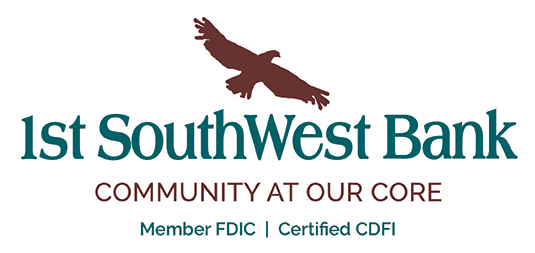The general answer to the question of how much mortgage you can afford is not the right answer to this question. The problem is that the answer that is generally given is to a different question: How much mortgage can I get approved for?
They’re not the same thing, and just because you can get approved for a given mortgage doesn’t mean that you should spend that much.
Lending institutions care about your ability to pay back the loan. They base their approval on what you can pay back, not on what you can afford.
It does not matter to the lender if you can’t afford to save for retirement or the education of your children. The only thing that matters to the lender is whether or not you pay them back. If you don’t want to live exclusively to pay a mortgage, then you should probably purchase less home than the lender thinks you can afford.
Here’s how to determine how much mortgage you can really afford.
The Approval Process
Two things drive how much mortgage you can get approved for: one is your credit history; the other is the amount of debt you carry.
Your credit history can prohibit you from getting a mortgage if your credit is very bad; it can reduce your options and increase your costs if it is poor.
Great credit primarily helps you attain lower mortgage rates; you won’t get approved for significantly more than if you just have good or very good credit.
Your debt load is a significant factor in the amount of mortgage you can get approved for. The easiest way to determine debt’s impact is through debt to income (DTI) ratios.
There are two DTI ratios that form the traditional basis of mortgage approval. These ratios were hard and fast rules in the past; they are general guidelines today. Lenders have much better data now than they did in the past, and there is some additional flexibility now, due to better information.
The first limit is for total housing costs, consisting of principal, interest, taxes, and insurance. The total of these amounts shouldn’t exceed 28 percent of your gross income. Stated another way: Your housing cost DTI shouldn’t be more than 28 percent.
The second limit is for total debt. Your housing costs plus other debt payments shouldn’t exceed 36 percent of your gross income.
This includes student loans, car payments, credit card payments, and any other debt. You can influence this ratio by paying down short-term debt, such as credit cards, and timing car purchases to avoid having two car payments when you are shopping for a home.
Because mortgage expenses is a major portion of DTI, it is easier to get approved for longer-term mortgages, such as 30 years instead of 15 years, as the payment is lower and you can finance more before you hit the DTI limit.
Note that the typical approval process does not take into consideration your need or ability to fund retirement or education. It is based solely on the lender’s interpretation of your ability to pay them back.
Mortgage Affordability
Mortgage affordability should be determined based on your ability to afford a home in context of funding your other goals.
For many people there is a trade-off between how much house they buy and what else they can accomplish financially. Too much house oftentimes means less for education or retirement.
To determine what you can actually afford, you need to budget. The process is to determine how much is left over after you have allocated savings for retirement, education if that’s in your plans, and any other financial goals.
There are many good calculators available online that can assist you with determining how much you should be putting away for retirement or education goals.
What you are currently spending for living expenses is a good starting point to estimate your living expenses in a new home. There are generally changes to expenses when changing residences, especially if you are going from being a renter to an owner. There are many hidden ownership costs that renters may not pay directly.
Upkeep is not the renter’s responsibility, but it is the homeowner’s for sure. Even newer homes need some upkeep, and the cost of upkeep and any anticipated updating needs to be factored into the budget.
Likewise, any increased costs for lawn care, snow plowing, or other expense that you may not have incurred as a renter need to be planned for. Even if you are going to do your own yard and driveway, you may need to plan on buying a mower and a shovel.
Planning for expenses in advance helps make sure they’ll be affordable when the time comes.
There are hidden costs to ownership; owners need to be prepared for emergencies or other unanticipated expenses.
Plugging these costs, along with savings goals and living expenses, into your budget will show you what is left over to allocate towards home expenses.
For many people, making an appropriate allocation for retirement and education savings will result in a mortgage allocation that is less than what they could get approved for. By running the numbers first, you can see what you might have to give up in order to buy the house you could get approved for.
You get to make that decision; by being informed, you go into it knowing if you will be shorting yourself in retirement savings or not able to travel for vacations because there is no room in the budget for such luxuries.
Home Ownership and Taxes
Tax savings as a result of home ownership can no longer be automatically assumed.
With higher standard deductions and limitations on state and local itemized deductions, fewer homeowners will see a significant tax advantage — or even any tax advantage — to owning over renting.
This doesn’t make home ownership a bad idea, it just changes the math on affordability.
You should calculate the tax impact of home ownership. You want to calculate your tax liability with the home expenses as compared to your present tax liability to see what difference home ownership would make on your taxes.
If you are comfortable with taxes, you can easily do this with pen and paper; if you are not as comfortable with taxes, you can do this by using an online tax program.
If you will realize tax savings as a result of home ownership, you might want to consider adjusting your withholdings to put some of those savings into your monthly budget and make it easier to afford the home while saving for your long-term goals.
The Bottom Line
Being financially literate is about making informed financial decisions. Lending institutions will often offer homebuyers more mortgage than is prudently affordable.
Since each person’s financial situation is unique, it behooves you to run a budget to see how much mortgage is affordable in your own situation, and not rely on a lender’s numbers.
The risk of relying on those numbers is that you may be able to make the house payments, but at the cost of not being able to do other things that are important to you financially.
By determining how much you can afford in your situation, you can buy a home and still live the life you want to live, free from being over-mortgaged and unable to do what you want to do financially in life. And that is what is truly affordable.

